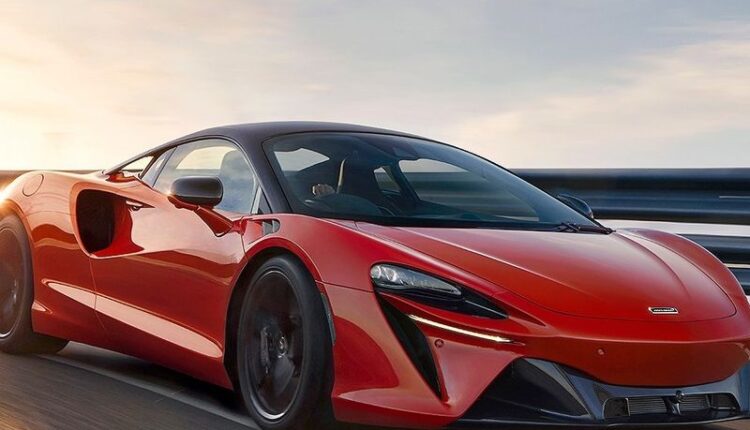LONDON — McLaren Group has given itself hope of a more stable future as it moves into the electric era. The automaker is strengthening its finances, which were hit by COVID-19, with measures including selling core assets.
McLaren faced a severe cash crunch in 2020 after wholesale sales to dealers plummeted to 1,659 cars from 4,662 in 2019. It posted a loss of 686 million pounds ($948 million) for 2020.
The company quickly raised 300 million pounds from shareholders after the pandemic took hold in spring 2020 and was given a crucial 150 million pound short-term loan from National Bank of Bahrain, but that was just phase one of what became an urgent, yearlong search for fresh investment.
Its survival depended on gaining access to more long-term financing. Therefore, McLaren embarked on what the company called a three-phase plan.
Phase two was selling a stake in McLaren’s Formula One racing team, which the company did in December, creating a new joint venture.
It also raised 170 million pounds selling and leasing back the company’s combined headquarters and manufacturing facility in Woking, southern England, in April.
However, the third phase was the most ambitious: raising the funds to implement the company’s five-year plan and refinance existing debt.
Electric plans
The money will help finance moving its cars onto an electrified platform, with a goal of launching its first EV by the end of the decade.
If McLaren’s debt raise failed it would “cast significant doubt over the Group’s ability to continue as a going concern,” McLaren warned in a report detailing its 2020 finances, filed in May.
The first stage of that was achieved in July when McLaren announced a 550-million-pound equity investment, of which 400 million pounds came from Saudi Arabia’s Public Investment Fund (PIF) and global investment firm Ares management.
The money does not dilute the stake of existing shareholders, led by Bahrain’s Mumtalakat sovereign investment fund, but does give PIF and Ares one seat each on the board, should they choose to take it.
“This successful equity raise is a key element of our comprehensive financial strategy to support the Group’s sustainable growth plans,” McLaren Group Executive Chairman Paul Walsh said in a statement.
Existing shareholders as well as a limited number of new private investors agreed to add another 150 million pounds of capital to bring the total to 550 million.
The existing shareholding structure has been altered with each share subdivided into three, McLaren said in a filing in August, but the shareholding percentages haven’t changed.
Mumtalakat has 56.3 percent of McLaren Group. TAG Group, led by Saudi-born businessman Mansour Ojjeh, has 14 percent, and Nidala, an investment vehicle owned by Canadian Michael Latifi, father of F1 driver Nicholas Latifi, owns 10 percent.
The company also tapped the debt market and in August said its planned $620 million of senior notes, secured against McLaren’s intellectual property, was oversubscribed at an interest rate of 7.5 percent.
The interest from investors came despite Moody’s Investors Service rating the notes CAA1 in its grading system, which means they are judged to be “speculative” and “subject to very high credit risk.”
Moody’s said the poor rating reflected McLaren’s “small scale and limited financial strength compared with most of its competitors as well as continued reliance on a few core models.” It also criticized the complexity of the group’s structure. The notes were issued by McLaren Finance, which is part of McLaren Holding, which is part of the McLaren Group.
Asset sales
The group is now focused on creating sports cars after it agreed in August to sell its money-losing engineering arm, McLaren Applied, to London-based Greybull Capital.
McLaren Group still has joint ownership of the racing arm through its 67 percent stake, but that is treated as a separate company and despite its majority ownership “the company no longer has unilateral control of McLaren Racing” thanks to “substantive rights” held by the investor, MPS Sports Capital, McLaren said in a May filing.
McLaren had last year revised its seven-year Track 22 plan, enacted in 2015, which called for annual vehicle sales of 5,000. The company has downgraded that target to 4,000.
The company is moving more slowly than mainstream automakers toward electrification and has said will offer an all-hybrid lineup by 2026 with a full-electric car coming before the end of the decade.
The key model in the electrification shift is the delayed Artura plug-in hybrid that was revealed in February and is the first to use the company’s lightweight carbon architecture and is also the first McLaren to have a V-6 engine.


